|
Dynamic
behaviour and fun to drive
|
|
Driving
enjoyment has always been a strong point of Fiat
Professional commercial vehicles. This is partly thanks to
the “green” engines that deliver a sparkling performance and
progressive torque build-up while keeping consumption and
maintenance costs low. But for the ultimate driving comfort,
you also need a thoroughly tested, reliable suspension
system: Mc Pherson at the front, torsion bar at the rear.
This solution – together with 14” and 15” tyres – helps to
ensure optimum dynamic behaviour, great roadhold and
reaction capability, and accurate driveability, whatever the
load.
1.3 16v Multijet (75 bhp)
It goes without saying that the new Fiorino is available
with the 1.3 16v Multijet, the smallest and most advanced of
the direct injection second generation “Common Rail” diesel
engines, produced by FPT - Fiat Powertrain Technologies at
the Bielsko Biala plant in Poland. Combined with a manual
5-speed or automatic 6-speed gear box, the turbodiesel
generates a maximum power output of no less than 75 bhp (55
kW at 4000 rpm) with torque of 19.4 kgm (190 Nm at 1750 rpm,
ensuring excellent performance and the best consumption in
its class: for example, top speed is 157 km/h while 4.5 l
per 100 km is registered in the combined cycle, translating
into fuel autonomy of 1000 km on a full tank of 45 litres.
In detail, the engine contains 4 cylinders in line, with
total displacement of 1248 cm3, with a bore of 69.6 mm and a
long stroke of 82 mm. There are 4 valves per cylinder,
activated directly by twin overhead camshafts via rocker
fingers with a roller. The 1.3 Multijet 16v is a miniature
technological masterpiece: fully dressed with all its
accessories, it weighs just 130 kg. It is small (less than
50 cm long and 65 high), and the components have been
designed to take up as little space as possible. Designed to
be as rational, efficient and reliable as possible, the
engine generates excellent performance and is basically “for
life”. Oil change intervals are set at 30,000 km or 24
months (the 1.3 Multijet 16v uses a low-viscosity oil
ensuring fuel economy) and is also eco-friendly.
Compact and technologically advanced, the 1.3 16v Multijet
is also “green”, as it complies with Euro 4 emissions
limits. The CO2 value is just 119 g per km. More
specifically, the emissions control system features an
electric-actuated EGR valve controlled directly by the
engine control system, a recirculating gas cooling device
and a close-coupled catalytic converter. Early in
2008, the DPF (Diesel Particulate Filter) will also be
available - a “for life” system that reduces fine particles
and requires no additives for regeneration.
The 75 bhp 1.3 Multijet 16v is a real technological advance
that translates into reduced emissions and consumption. The
secret of the turbodiesel is the Multijet system of the
second-generation Common Rail technology. This is the most
advanced solution for controlling high injection pressure
(up to 1600 bar) and is no longer dependent on the engine’s
rpm and the quantity of fuel injected. Compression is not
only related to the speed at which the engine is turning,
but to different parameters relayed to the control panel
through specific sensors (air and fuel temperature, revs,
position of accelerator, brake and clutch pedals, vehicle
speed, air and fuel pressure).
The key component of this system is the electronic control
panel, which can command a series of injections very close
together (hence the name “Multijet”). There can be up to 5
injections during each engine cycle, instead of the two
traditional ones. The same amount of fuel is burned inside
the cylinder, but it is divided into smaller parts,
resulting in more gradual consumption. This ensures smoother
functioning in any conditions, and a more responsive,
elastic drive, which makes these engines increasingly
similar to petrol ones. Other advantages include reduced
noise, emissions, and improved performance, together with an
engine output that makes the vehicle even more enjoyable to
drive.
1.4 8v (73 bhp)
The engine has a total displacement of 1360 cm3 and 4
cylinders in line with a bore of 75 mm and a stroke of 77 mm
(two valves per cylinder activated directly by twin overhead
camshafts). When developing the engine, particular attention
was also paid to performance and consumption, as
demonstrated by the power of 73 bhp (54 kW) at 5200 rpm and
a maximum torque of 12 kgm (118 Nm) at 2600 rpm. Combined
with a mechanical 5-gear transmission, the engine delivers a
sparkling performance (maximum speed 157 km/h) but uses fuel
sparingly, with a consumption of 6.9 l per 100km in the
combined cycle.
|
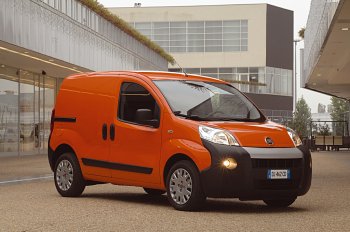
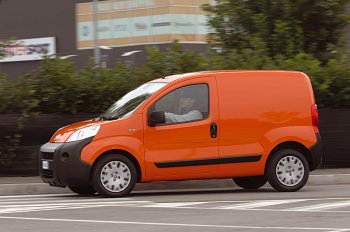
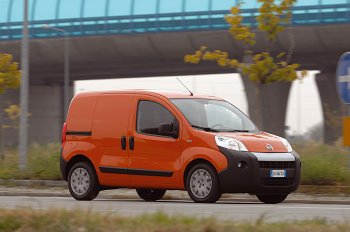 |
|

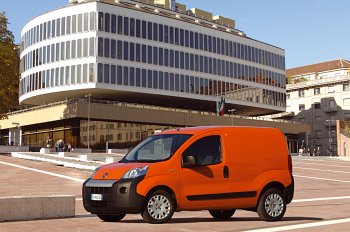
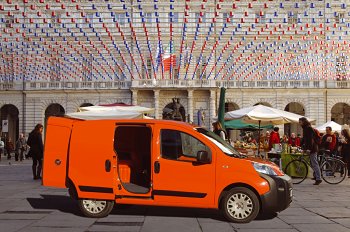 |
|
Lastly, the 1.4 (73 bhp) meets Euro 4 standards and
records a CO2 value of 164 g per km.
Comfort-Matic automated gear
box
Available with the 1.3 Multijet 16v engine, the Comfort-Matic
gear box provides automatic transmission for total comfort
in urban traffic. Through an electro hydraulic system,
Comfort-Matic automates the clutch and gear lever controls
while maintaining all the benefits of the dry clutch and
mechanical transmission (weight, fuel economy, strength and
reliability). There are two modes: semi-automatic (manual)
and automatic.
The first is the most similar to manual operation, as the
gears are engaged using the lever on the dashboard. Without
the clutch pedal, only the gear lever needs to be moved:
forwards (towards the “+” symbol) to move up a gear, or
backwards (towards the “-” symbol) to change down. A simple
touch is all that is required for a fast, accurate gear
change. In the second mode (automatic), gears can be changed
when the engine’s output is at its maximum, thus harnessing
the full power and torque of the 1.3 Multijet. In this mode,
the system recognises gradients and alters the gear change
in order to obtain the best compromise between the needs of
the driver, the terrain and the vehicle's status (speed and
engine rpm).
The Comfort-Matic also has another advantage compared to
manual and traditional automatic transmissions: it can
“read” the driver’s mind and adapt to his driving style. To
do this, it maps the position of the pedal and engine
rotation (interpreted as request for power). For safety
reasons and to prevent unwanted gear changes, if the door is
open it automatically idles if the engine is still switched
on. Visual and acoustic signals draw attention to emergency
situations or manoeuvres that could damage the engine or the
transmission. The engine technicians have succeeded in
configuring a gear change programme that reduces consumption
without affecting performance, or the pleasure of driving
the vehicle. Last but not least, all this technological
content comes at a price that is significantly lower than
that of a traditional automatic transmission.
Robust, reliable suspension
systems
The suspension system in the new Fiorino helps to provide
full control of the vehicle’s movements, assuring stability,
excellent reaction capability, and accurate steering in any
road conditions and with any load. The front suspension is
McPherson-type with triangular lower arm and aluminium
stabiliser (this reduces the weight of the suspension
without affecting its performance). This well-tested
solution has been reviewed with the aim of optimising all
the components and kinematic parameters: offset coil
springs, calibration of shock absorbers, rigidity of
bushings, blocks and rubber bumper stops, diameter and shape
of the roll bar. Specifically, the use of an independent
wheel system ensures rigorous control of the geometry and
assures excellent behaviour on the road, outstanding comfort
and significantly reduces tyre wear. The new front geometry
has also reduced the turning circle (just 9.95 metres).
The rear torsion bar suspension ensures good dynamic
behaviour, enabling the loading sill to be reduced to just
53 cm off the ground, without affecting the accessibility of
the loading area. The wide tracking on the new Fiorino
contributes to its excellent handling: the front track is
1.469 mm (1.465 for the Adventure version), with 1.465 mm at
the rear. The maximum permitted loads are also worth noting:
900 kg on the front axle and 950 kg at the rear.
Hydraulic power steering
The new Fiorino features hydraulic power steering that has
been specifically calibrated to provide a more centred,
accurate drive while ensuring that the effort required is
suited to the various conditions of use, for urban driving
and parking manoeuvres in particular. Specifically, the
power steering is provided by an electro-pump developed
specifically for the new model, controlled by the speed of
the vehicle and the speed at which the steering wheel is
turned. Power steering is therefore unrelated to engine
speed. Apart from the added driving pleasure this generates
in comparison to traditional power steering systems, it
helps to reduce fuel consumption.
Wheels and tyres
The tyres on the new Fiorino Cargo have been designed so as
to achieve the best possible balance between handling,
comfort and style. The entire range is fitted with 14”
wheels and 175/70R14 tyres (185/65R15 available on request,
and standard on the “Adventure” models). |
|